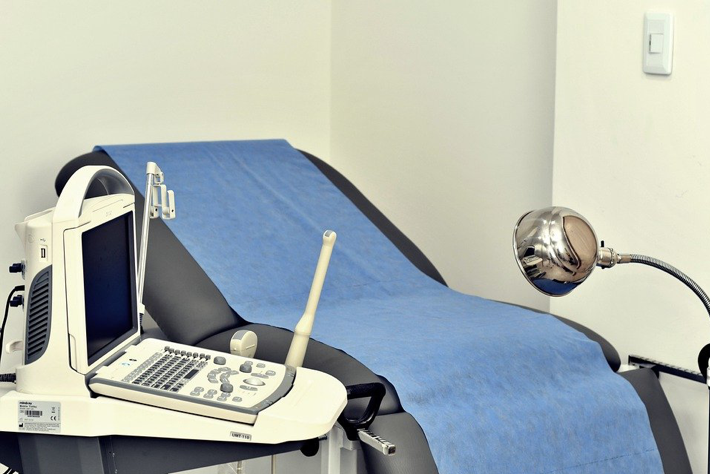Uterine prolapse is a disorder that relates to stretched and weakened pelvic ligaments and muscles. When this condition occurs, the muscles no longer provide support to the uterus. Consequently, the uterus swells out of the vagina or slips down. This condition may occur at any age in women. However, it mostly occurs in women who had vaginal deliveries. If you have mild uterine prolapse, you won’t require any treatment. You can seek help via treatment if you experience uncomfortable consequences due to this disorder.

(Source)
Symptoms of Prolapsed Uterus
With minor uterine prolapse, you won’t experience any symptoms. Conversely, moderate and severe prolapse might include these symptoms:
- Vaginal bleeding
- Problems during sexual intercourse
- Strange feelings, as if you are sitting on a ball
- Increased discharge
- Heavy or pulling feeling inside your pelvis
- The cervix or uterus sinking out of the vagina because of swelling
- Problem emptying the bladder or developing bladder infections
- Constipation or difficulty in passing stool
You should immediately visit an experienced doctor if you experience any of these symptoms. The doctor will diagnose you and treat the condition. Failure to seek timely medical attention might impair bladder, bowel, and sexual functions.
Causes of Prolapsed Uterus
You might develop this condition due to weakened muscles in the pelvic region. Here are some of the reasons for weak muscles:
- Consistently lifting heavyweight
- Pregnancy
- Trauma during delivery, giving birth to a large baby or undergoing vaginal delivery
- Chronic coughing
- Straining during bowel movements
- Pelvic surgeries
- Weak connective tissues due to genetic factors
- Drop in the levels of estrogen due to age factor. This mostly happens after menopause.
Risk Factors for Prolapsed Uterus
Uterine prolapse occurs in the following situations:
- When you are post-menopausal
- When you go through vaginal deliveries
- If your family members had a prolapse
Menopause is when the ovaries lose their ability to produce hormones that trigger your monthly menstrual cycle. You are in a menopausal condition if you haven’t had a period of 12 months. During menopause, you stop producing estrogen, which helps in strengthening the pelvic muscles. When this happens, you are at a higher risk of developing prolapsed uterus.
Diagnosis for Prolapsed Uterus
Pelvic examination
You need to go through a pelvic exam to diagnose the disorder. The doctor will ask you to:
- Sit down as if you have a bowel movement. This will help the doctor examine the uterus and estimate how much the uterus slips inside the vagina.
- Tighten the pelvic muscles as you are stopping the stream of urine. This will help your doctor to test the strength of the pelvic muscles.
The doctor will ask you to fill out a questionnaire. This is to assess how the condition affects your life quality. After going through the diagnosis, the doctor will decide the best treatment option. After that, you will undergo urodynamic testing so the doctor can examine how your bladder is functioning.
Treatment for Prolapsed Uterus
The need for treatment depends on the severity of your condition. If you feel the prolapse is getting worse, you need to discuss it with your doctor. They will help you choose the best treatment option:
1. Non-surgical Treatments
Here are some non-surgical treatment options:
- Avoid lifting heavy objects
- Decreasing stress from your pelvic structure by losing weight
- You can use a pessary to stabilize your cervix and uterus. You need to insert this device into your vagina.
- Perform Kegel exercises for strengthening your vaginal muscles.
According to some studies, you can use vaginal estrogen to strengthen and regenerate the vaginal tissue. Vaginal estrogen will help improve the results of various treatments. In contrast, it does not reverse the prolapsed itself.
2. Surgical Treatments
The doctor might suggest various treatments to repair the prolapsed uterus. Vaginal or laparoscopic surgeries might help with the condition. Here are some surgeries that might help:
- Hysterectomy or Removal of the Uterus
Hysterectomy is a safe treatment option but includes various complications. A doctor will recommend this surgery for uterine prolapse in various cases.
- Repairing Weakened Tissues in Pelvic Region
The doctor will perform this surgery through the abdomen or vagina. In this treatment option, the surgeon will support the pelvic floor’s structure through synthetic material, donor tissue, or your tissue. This way, your pelvic organ gains crucial support.
Surgery options for prolapsed uterus are very effective but not suitable for women planning to have children. Childbirth and pregnancy exert a strain on your pelvic muscles, which affects the support for the uterus.

(Source)
Preventions for Prolapsed Uterus
There is no technique to prevent uterine prolapse, but you can reduce your risk of developing the conditions by incorporating these activities into your routine:
- Maintaining your weight
- Performing physical exercises daily
- Practicing Kegel exercises
- Undergoing treatments for disorders that increase the pressure in your pelvis, such as coughing or constipation
Conclusion: Consult an Expert Urologist
If you encounter any symptoms of a prolapsed uterus, you need to discuss with the urologist for treatment options. You can consult with Dr. Larish by calling at 212-675-3186 if you live in New York City. He will understand your disorder and guide you through the risk factors and benefits of the treatment. You can visit our clinic, Fifth Avenue Urology, for further information about the condition.
